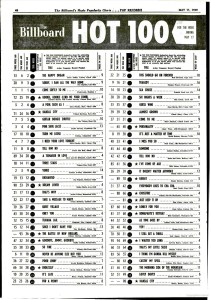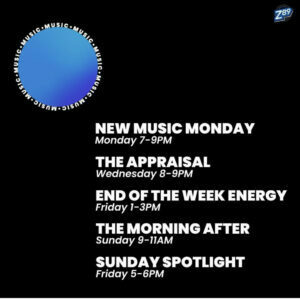Forever No. 1: Dave ‘Baby’ Cortez’s ‘The Happy Organ’
Forever No. 1 is a Billboard series that pays special tribute to the recently deceased artists who achieved the highest honor our charts have to offer — a Billboard Hot 100 No. 1 single — by taking an extended look back at the chart-topping songs that made them part of this exclusive club. Here, we honor Dave “Baby” Cortez, who had the first instrumental hit to top the Hot 100, the appropriately titled “The Happy Organ.” The reclusive Cortez died in 2022 at age 83, but his death was just recently reported.
“The Happy Organ” may be one of the most accurately descriptive titles ever on a pop hit. From its opening notes, Dave “Baby” Cortez’s rollicking recording is a happy, exuberant, organ-based instrumental. It reached No. 1 on the Hot 100 in May 1959, becoming the first instrumental hit to top the chart, which Billboard had introduced nine months previously.
“The Happy Organ” was one of the first contemporary pop instrumentals to feature an electronic organ as its primary instrument. This helped transform the instrument, typically associated with Sunday church services, into a mainstay of contemporary pop instrumentation. Subsequent No. 1 hits that feature a Hammond organ include The Beatles’ “Come Together” (1969), Janis Joplin’s “Me and Bobby McGee” (1971) and Manfred Mann’s Earth Band’s “Blinded by the Light” (1977).
Cortez, his frequent collaborator Kurt Wood and celebrity photographer James J. Kriegsmann are the credited composers of “The Happy Organ,” which borrows from the traditional American folk song “Shortnin’ Bread,” which dates back at least to 1900.
“Organ” originally had lyrics, and was intended to be sung. Cortez recorded a vocal, but he wasn’t satisfied with it. In what can only be described as a “happy” accident, he spotted a Hammond electric organ sitting unused in the corner of the studio. At the time, they were almost exclusively used in gospel recording sessions. Cortez decided to try it out. Everyone liked what they heard. The copy on the single read “Featuring at the organ, Dave ‘Baby’ Cortez.”
Cortez also brought in studio drummer Gary Hammond, who provided percussion. Session musician Wild Jimmy Spruill played the guitar solo. That interlude, which appears at the 1:13 mark, brought some needed variation to the record, and allowed it to connect with rock & roll fans at the time.
Most smash instrumentals prior to “The Happy Organ” were easy listening fare, such as Roger Williams’ “Autumn Leaves” (1955) and Morris Stoloff’s “Moonglow and Theme From ‘Picnic’” (1956). “Organ” was one of the first smash hit instrumentals – along with The Champs’ “Tequila,” which hit No. 1 on a pre-Hot 100 Billboard pop chart in March 1958 – that was pitched to a younger audience. In the wake of these two recordings, hit instrumentals were more evenly balanced between records that primarily appealed to young audiences (Santo & Johnny’s “Sleep Walk” and The Tornadoes’ “Telstar”) and ones that were primarily geared toward older fans (Percy Faith’s “The Theme From ‘A Summer Place’” and Mr. Acker Bilk’s “Stranger on the Shore”).
Cortez was born David Cortez Clowney on Aug. 13, 1938 in Detroit. He made his first record in 1956 under his own name, and also sang with two doo-wop groups, the Pearls and the Valentines. Neither group made the Billboard charts, either pre- or post-Hot 100.
Cortez adopted his stage name in 1958, after which things fell quickly into place. Even though he had knocked around for a while, he was still just 20 when “The Happy Organ” became a smash.
“The Happy Organ,” released on the independent, New York-based Clock Records label, was the top new entry on the Hot 100 at No. 68 in the issue dated March 16, 1959. The title was shown as simply “Happy Organ” in its first three chart weeks. The title was corrected in Week 4, when the record sprinted from No. 35 to No. 25. The record reached No. 1 in its ninth week, in the issue dated May 11, 1959. It dethroned The Fleetwoods’ pretty ballad “Come Softly to Me,” which had spent the previous four weeks on top. After one week in pole position, “The Happy Organ” was toppled by Wilbert Harrison’s “Kansas City.”

Billboard
“The Happy Organ” clocked in at just 2:02, making it the briefest No. 1 hit of 1959. Among all 22 instrumentals that have hit No. 1 in Hot 100 history, only David Rose’s bawdy 1962 burlesque smash “The Stripper” had a shorter running time (1:53).
Cortez remained in the same vein for his follow-up single, “The Whistling Organ,” which peaked at No. 61. He returned to the top 10 in 1962 with “Rinky Dink,” which peaked at No. 10. All eight of his Hot 100 hits were instrumentals, the final one being “Count Down” in 1966. In 1973, Cortez reached No. 45 on what was then called Hot Soul Singles with “Someone Has Taken Your Place.”
Cortez subsequently left the music industry. He led an extremely private life over the ensuing decades, variously in New York City and Cincinnati, where he was a church organist for a time. In 2009, Norton Records co-founder Miriam Linna tracked him down and persuaded him to return to recording. In 2011, following a 38-year hiatus, Cortez returned with a new album on Norton Records, Dave “Baby” Cortez With Lonnie Youngblood and His Bloodhounds. It was his 11th and final album.
In his final years, Cortez lived in the Bronx, New York. He had a daughter with whom he was not in regular contact, owing to his being so reclusive. He died at his home on May 31, 2022, at the age of 83 and was interred in the potter’s field at Hart Island. His daughter only later learned of his death through BMI, which handled his songwriting royalties.
With the belated news reports confirming Cortez’s death, a dwindling number of solo artists who had No. 1 hits in the 1950s are still living. Just two solo artists who topped the Hot 100 in 1958-59 are still with us. Frankie Avalon, who hit No. 1 in 1959 with both “Venus” and “Why,” is 84. Paul Anka, who topped the chart in 1959 with “Lonely Boy,” is 83.
Anka had also topped a pre-Hot 100 Billboard pop chart in 1957 with “Diana.” Three other solo artists who had No. 1 hits on Billboard pop charts before the inception of the Hot 100 are likewise still living. Pat Boone, who had several No. 1 hits starting with a cover version of Fats Domino’s “Ain’t That a Shame” in 1955, is 91. Johnny Mathis, who topped the chart in 1957 with “Chances Are,” is 89. And Laurie London, who as a 14-year-old hit No. 1 in 1958 with “He’s Got the Whole World in His Hands,” is 81. Boone and Mathis subsequently had No. 1 hits on the Hot 100, while London never returned the pop chart after “Hands.”
Trumpeter Ray Anthony didn’t quite land a No. 1 hit – he climbed as high as No. 2 on pre-Hot 100 pop charts in Billboard with “At Last” (later famously covered by Etta James) and “Dragnet.” The musician, the last surviving member of the famed Glenn Miller Orchestra, is still living at 103.
As for “Happy” songs at No. 1 on the Hot 100, there have been several others across the decades including Jimmy Soul’s “If You Wanna Be Happy” (1963), The Turtles’ “Happy Together” (1967), Bobby McFerrin’s “Don’t Worry Be Happy” (1988) and Pharrell Williams’ “Happy” (2014).
Happy songs, apparently, never go out of style.
Powered by Billboard.

